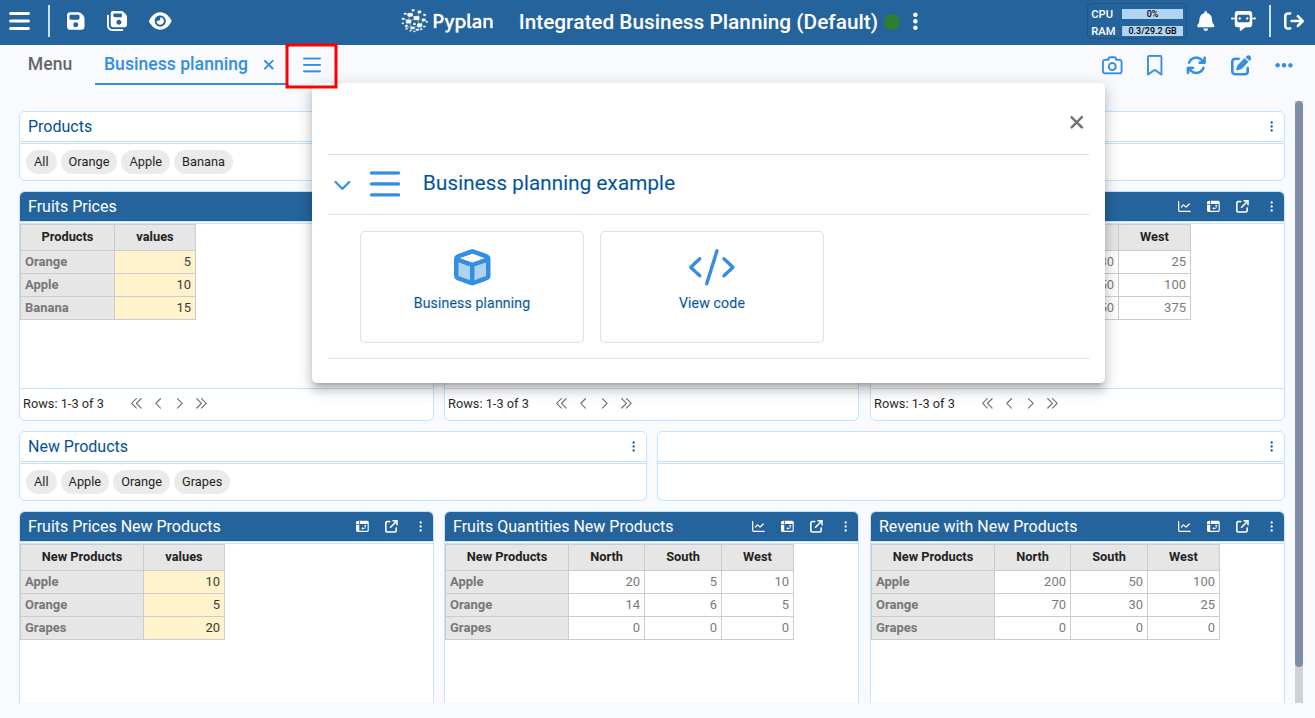This section details how to manage certaing properties from an application.
To access an application's properties, click on the App Properties option from the three-dot menu located to the right of the application's name in the top bar:
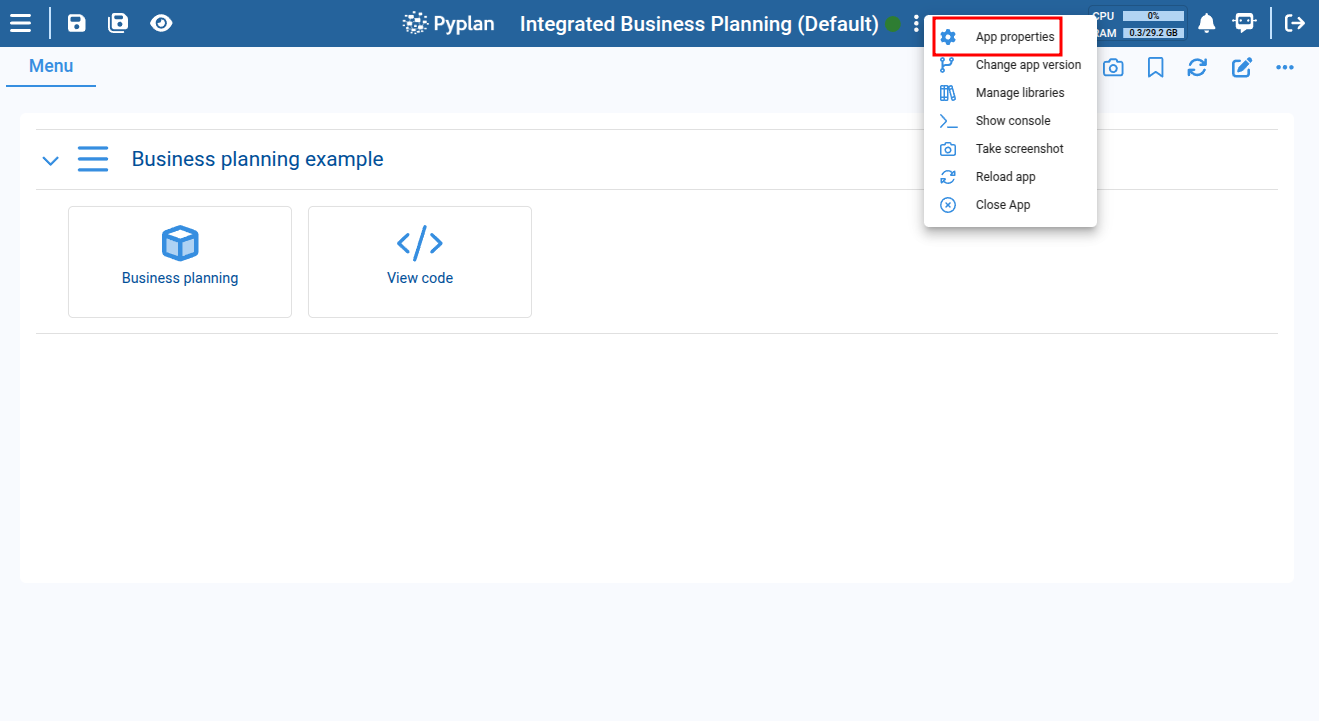
The dialog will display three tabs:
- Summary
- Default interface
- App configuration
¶ Summary
This tab displays a list of properties the application has:
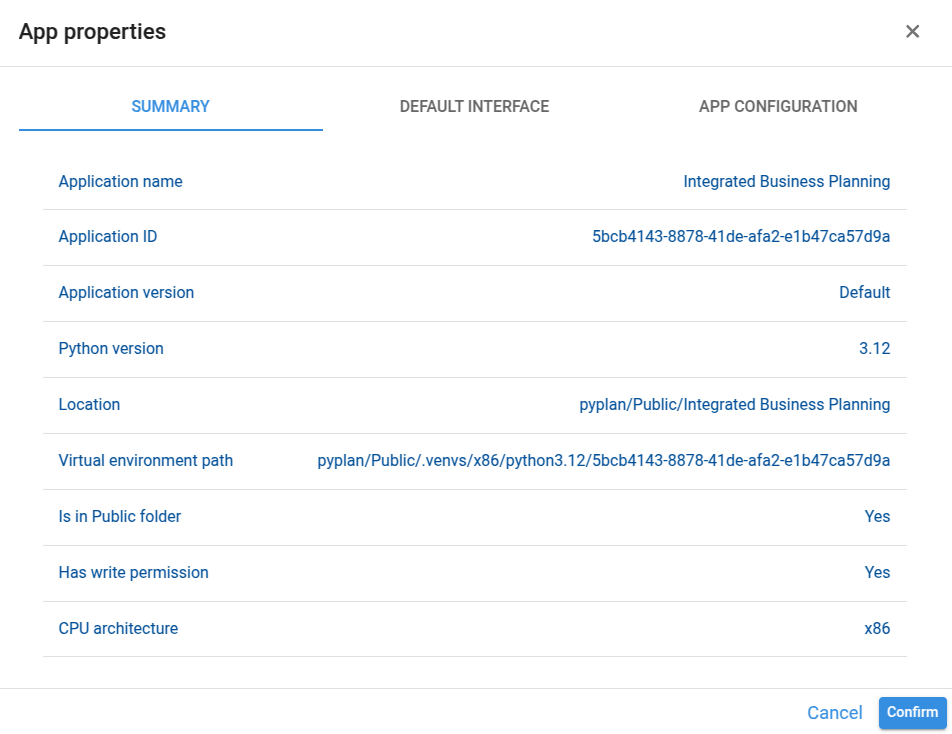
- Application name: Name of the application. It is the name of the folder that contains the application with its app.ppl file.
- Application ID: ID of the application. This ID is associated to the following aspects:
- Virtual environment.
- Workflow processes.
- Module and interface access restrictions by department.
- Assistant Bots using OpenAI framework.
- Thumbnail images.
- Application version: The name of the currently open version of the app.
- Python version: The Python version the app is configured to run.
- Location: Folder path where the app is located.
- Virtual environment path: path where the virtual environment of the app is located.
- Is in Public folder: Indicates whether the app is located in the Public workspace.
- Has write permission: Indicates whether the user has write permissions in the folder where the app is opened.
- CPU architecture: The architecture of the CPU the app is running on. It can be either "x86" or "ARM". This setting can be configured in the department settings.
¶ Default interface
In this tab, you can select the default interface to display when opening an application. Ideally, this interface should include a menu for navigating through the application's different interfaces.
A default interface can be set for all users, and a specific default interface can also be assigned to certain user departments.
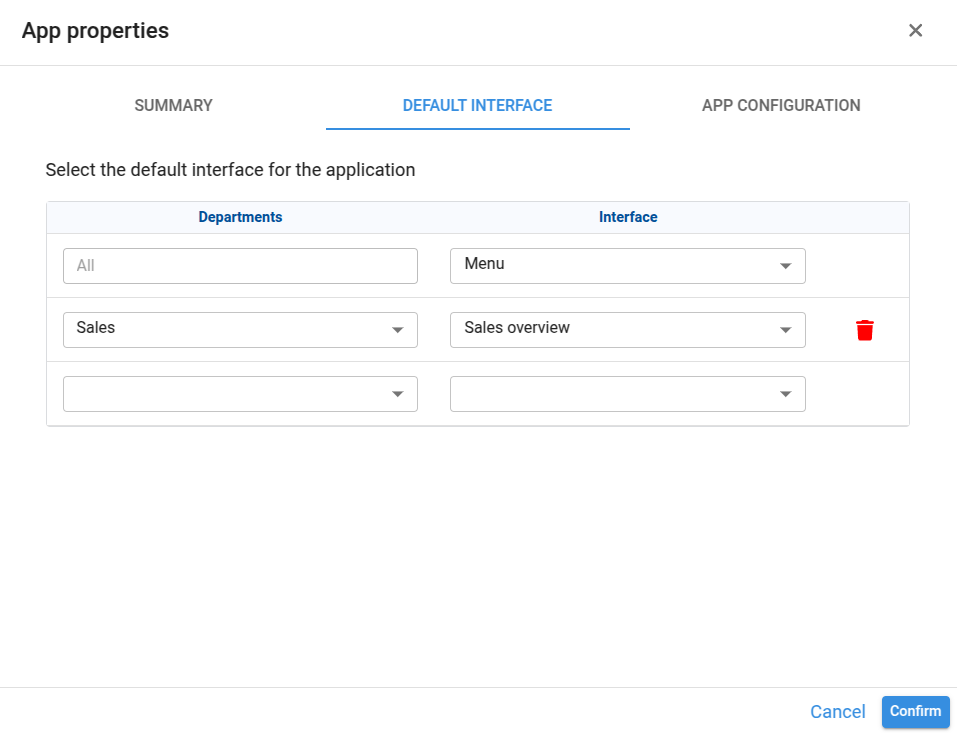
For example, if a user from the Sales department opens the app, the Sales Overview interface will be displayed as the default. However, if a user from a different department opens the app, the Menu interface will be shown instead.
This property is attached to the current version of the application. Differents default interfaces can be set for differents application versions.
¶ App configuration
This tab displays the following settings:
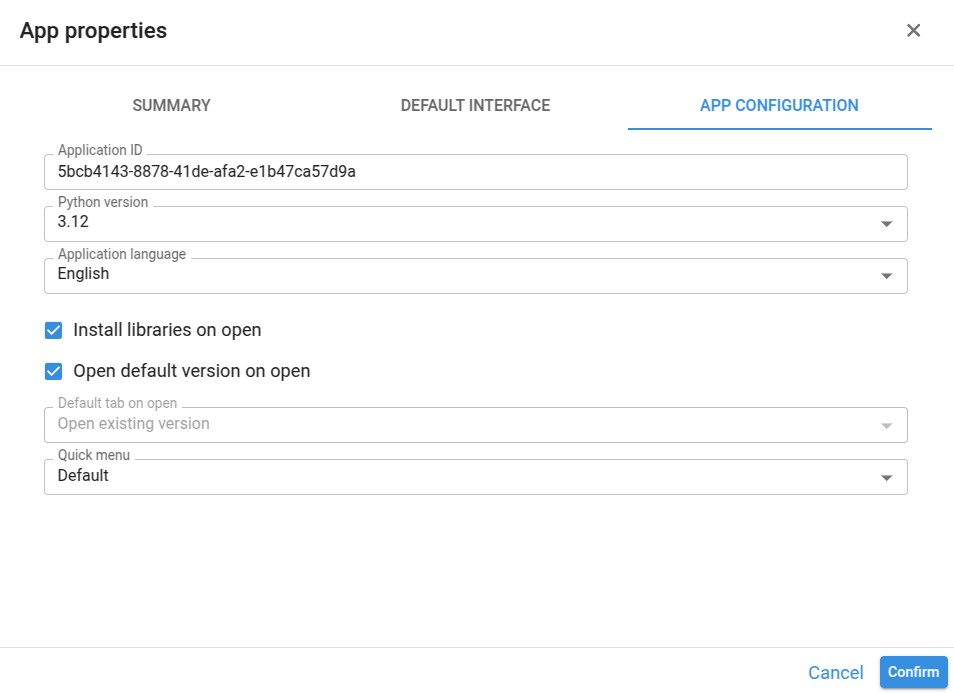
- Application ID: The ID of the application. This ID is associated to the following aspects:
- Virtual environment.
- Workflow processes.
- Module and interface access restrictions by department.
- Assistant Bots using OpenAI framework.
- Thumbnail images.
Changing this ID will cause you to lose all existing associations.
- Python version: The Python version the app is configured to run. If you change it, the application will need to be reloaded. A new virtual environment will be created using the selected Python version (if it doesn't exist already).
- Application language: Default language for node titles, documentation, interface titles, component titles and menu items.
- Install libraries on open: If enabled, the libraries specified in the application's requirements.txt file will be installed every time the application is opened.
- Open default version on open: If enabled, the default version of the app will be the one that opens by default when launching the application. If disabled, when you open the app the following dialog will be displayed:
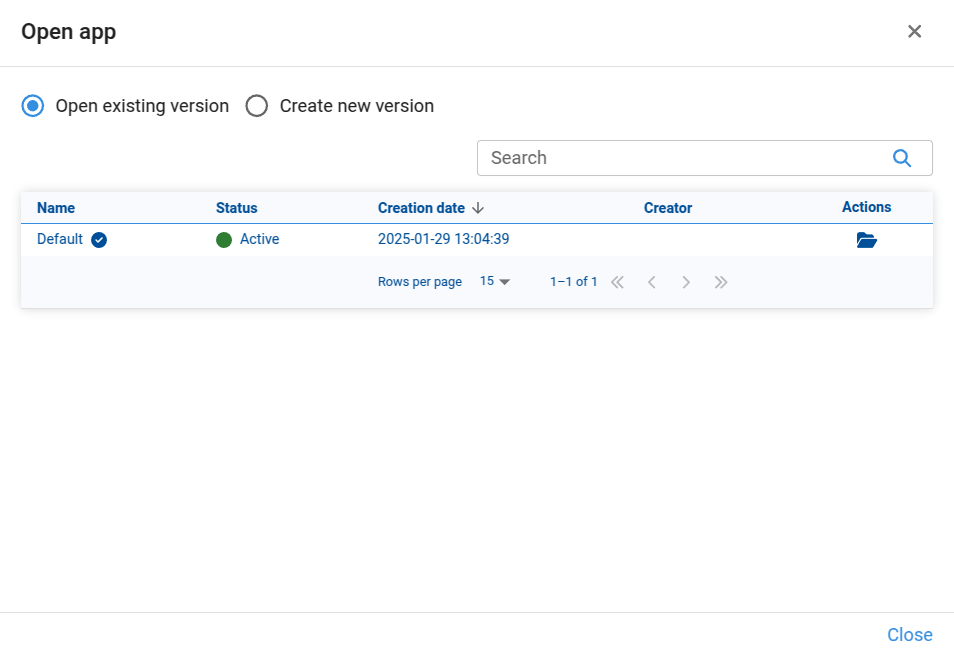
From this dialog, the user can choose an existing version to open or create a new version and open it afterward.
- Quick menu: In this setting, you can select which interface should be used to display the Quick menu when navigating between interfaces. It has two options:
- Default: The Quick menu will be taken from the app's default interface (if it includes a Menu component).
- From interface: The Quick menu will be taken from the interface of your choice (if it includes a Menu component).
The Quick Menu can be accessed from the "hamburger" icon located to the right of the interface tabs:
